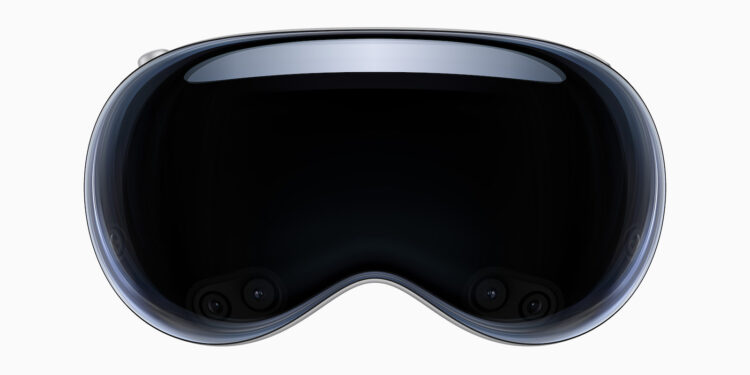Apple Vision Pro is not only causing a stir in the tech world, but has also raised great expectations in medicine. The headset could play an important role, especially in surgery. At the Sharp HealthCare summit, 300 doctors from ten countries came together to exchange their experiences with the new technology. The key questions: How does Apple Vision Pro change work in the operating room? Is the high price really a problem? And which applications are already in use?
The medical industry is considered to be rather conservative when it comes to introducing new technologies. In the surgical field in particular, it often takes years for innovations to become established. Nevertheless, the Apple Vision Pro is being accepted surprisingly quickly in many clinics. This is mainly due to the concrete advantages it offers surgeons. One important point is ergonomics. Until now, doctors in the operating room often had to look at large monitors, which led to unnatural postures and tension. With Apple Vision Pro, the important information can be displayed directly in the field of vision. This ensures a more natural posture and reduces the strain in everyday work. Another argument is cost efficiency. While classic operating room monitors often cost up to 20,000 US dollars, the price of an Apple Vision Pro is 3,500 US dollars (4,000 euros). This makes the headset an attractive alternative for many hospitals and clinics.
Sharp HealthCare invests in spatial computing
Sharp HealthCare is one of the first large healthcare facilities to actively integrate Apple Vision Pro into everyday clinical practice. A dedicated Spatial Computing Center of Excellence was founded in February 2024. 30 Apple Vision Pro headsets were purchased for this purpose and tested in various medical areas. One year later, Sharp HealthCare has now organized a summit to exchange initial findings. Doctors from all over the world have shared their experiences divided – with a consistently positive conclusion. The headset proves to be particularly helpful in surgical training and during complex operations.
Special apps for medical use
In addition to the hardware, the right software solutions also play a crucial role. In recent months, several specialized apps have been developed for Apple Vision Pro that were specifically designed for medical applications. The company Zeiss has introduced an app that allows ophthalmologists to analyze detailed videos of cataract operations. This not only makes evaluation easier, but also the training of new specialists. Another example is the app from Stryker, which can be used to view 3D models of hip and knee operations. These visualization options facilitate preoperative planning and help surgeons to better prepare for interventions. The company Elsevier has also developed an innovative application. Their app makes it possible to view detailed models of the human heart in 3D. This is a major step forward, especially for medical training.
Practical experience: Doctors are convinced
Surgeons who already work with Apple Vision Pro report that the headset is surprisingly precise. The ability to display real-time information directly in the field of vision is seen as a major advantage. According to Dr. Broderick from UCSD Health, the device practically fades into the background while you work. It is so intuitive to use that doctors hardly have to think about it. The learning curve is minimal, which is a crucial factor in a stressful environment like the operating room. Concerns about the weight of the headset also prove to be unfounded in practice. Many doctors report that they do not notice much difference to classic surgical glasses or magnifying glasses. Compared to the physical strain of constantly looking at monitors, wearing the Apple Vision Pro is actually more comfortable.
Economic aspects: High initial costs, long-term savings
At $3,500 (€4,000), Apple Vision Pro is not a cheap purchase. Nevertheless, many clinics see the long-term savings potential. The headset offers an attractive alternative, especially compared to previous monitor solutions, which cost many times more. Susan Prescott, VP of Worldwide Developer Relations at Apple, points out that Apple Vision Pro creates completely new possibilities for medicine. It's not just about improving existing processes, but also about making things possible that were previously not possible. Improving patient outcomes is a key factor in this.
What's next? The future of Apple Vision Pro in the operating room
The introduction of Apple Vision Pro in medicine is still in its early stages. But it is already clear that the technology has great potential for the future. The combination of 3D visualizations, real-time information overlays and ergonomic advantages makes the headset particularly attractive for surgeons. With further developments in software and falling hardware costs, its use is likely to increase even further in the coming years. Initial experience already shows that Apple Vision Pro could establish itself as a valuable tool in the operating room. The Sharp HealthCare summit made it clear that there is great interest - and that we are only at the beginning of an exciting development. Do you need useful tips for your Apple Vision Pro? Here you can discover everything you need to know about your new Apple device – enjoy reading! (Image: Apple)
- Apple Vision Pro: The next chapter in the gaming industry?
- Apple Vision Pro: GeForce NOW now available directly via Safari





